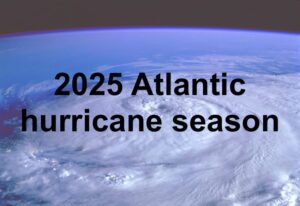Flood catastrophe: brokers mop up, predict 'significant' policy changes

Brokers are aiding the rebuilding efforts now underway in Lismore, NSW, and surrounding towns as floodwaters start to recede after more than two weeks of heavy rains, helping clients lodge claims and even donning gumboots and rain gear to help with the mopping up.
Meanwhile Honan Insurance Group says in the short term it anticipates underwriting moratoriums will be placed on new business in flood exposed regions as a result of the national catastrophe.
“Underwriters are expected to respond by focusing narrowly on risks sitting within postcodes impacted by this year’s flood and going back to 2011,” Honan said. “If they haven’t already, insurers will likely further limit or exclude flood cover.”
For many residents and business owners who have been through similar events in 2017 and managed to recover despite not having flood cover in most cases, this latest catastrophe may be too big a challenge to overcome, according to brokers who spoke with insuranceNEWS.com.au.
Ballina Insurance Brokers Director Andy Pepin and Good Cover founder and principal broker Matthew Williamson say they worry for clients whose businesses are not insured for flood.
“I am very concerned for them especially the ones [who were] in Lismore after the 2017 floods and have been able to come back from that,” Mr Pepin said.
“The ones that I have visited, they have hope in their eyes and they are attempting to rebuild but a lot of them don’t know whether they will be able to rebuild and stay there.”
He says his brokerage has so far lodged more than 450 claims for clients, both residential and commercial. A few of his commercial clients are insured for flood but the majority, especially those in floodplain areas, have no flood cover.
Mr Williamson agrees on the challenges facing communities without flood insurance.
“The entire [Lismore] town has been decimated by the floods,” Mr Williamson said. “It will be a long fight back for a lot of these people. Remember the vast majority of them in 2017 didn’t have flood insurance and they fought their way back.”
Many will no doubt be asking if it’s worthwhile to restart in Lismore again, he said.
As is well documented, premiums for flood cover are beyond the reach of many regional SMEs who operate on tight margins and lack the financial heft of their larger business counterparts.
In many cases, especially for small business owners who are in flood-prone towns such as Lismore, commercial flood cover is simply unobtainable because it’s not offered, brokers say. Most commercial policies do not include flood as standard cover, and there is no guarantee insurers would take on the additional risk if requested to do so.
Mr Williamson says Lismore is particularly hard when it comes to flood cover.
“I would go as far to say it’s almost impossible,” he said. “There are some people who have flood cover in Lismore but you have to be of a business of certain scale and size that can actually fund that.”
He says the insurance industry is aware that the flood defence mechanism in Lismore is not really effective.
“The flood defence mechanisms in Lismore really only defends the CBD,” Mr Williamson said.
There are one or two exceptions of SMEs who have flood cover though.
Mr Williamson, whose brokerage is based in Bangalow, NSW, just under an hour’s drive from Lismore, says he has a client who has flood cover and should be able to recover part of her loss.
He says the client, who is in Murwillumbah, north of Lismore, had no flood cover in 2017 and had to self-fund her recovery. She only realised after the 2017 flood that she wasn’t covered and switched broker, engaging Mr Williamson to arrange her business cover to include flood.
Hers is one of the few uplifting stories of SME businesses who have flood insurance and should be able to rebuild when their claims are processed. But for many out there, especially the ones in Lismore, they will likely have to rely on their own resources and government aid.
Mr Pepin, whose brokerage is in the town of Ballina, says his office was spared the worst of the floods. He says Ballina, located in the Northern Rivers region of NSW, was heavily inundated.
He has been in Ballina for 26 years but has never seen such devastation caused by floods.
Over the weekend, he took his wife, youngest daughter and her boyfriend to help a client whose mushroom farm has been hit by the floods. The farm is in Woodburn, about 34km south of Lismore.
Donning gumboots, they helped the client clean up whatever they could. He says the client, who has no flood insurance for his business, is looking at a repair bill of about $2 million.
“He’s lost every single growing shed, every bit of machinery,” Mr Pepin said.
“We have launched a claim to determine water damage from storm runoff. But we’re awaiting hydrologist reports to determine if he can get some storm or water runoff damage coverage.”
So has the time come for Australia to give serious thought to a flood reinsurance pool, similar to what the UK has, or even look into expanding the cyclone reinsurance pool to include flood?
Views are mixed on the two options.
Mr Pepin believes they should be explored but Mr Williamson says the government should take the climate risk seriously and that government attempting to offer insurance answers will not help in the long term.
“I fail to see how the insurance gets cheaper just because you get the government to do it,” Mr Williamson said. “What does the government know that Munich Re and Swiss Re don’t? Nothing.
“The risks that are faced by everybody and the insurers collectively as an industry, they are real so I don’t think the industry is mispricing or misrepresenting what the risk is.
“What they should do is provide these towns and areas with adequate mitigation and they should stop pumping fossil fuels into the atmosphere and think about cleaning up the environment.”






